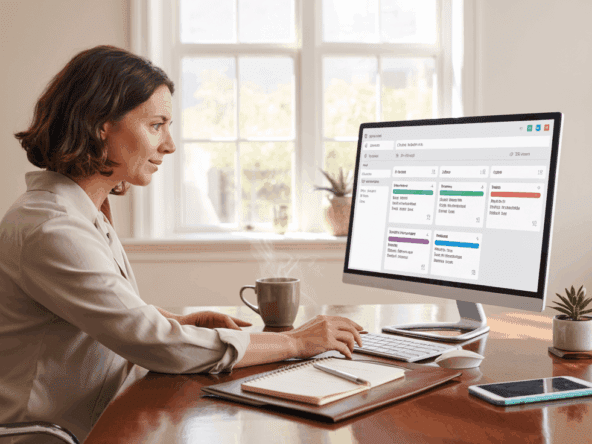Email marketing remains one of the most powerful, scalable tools for real estate professionals looking to nurture leads, retain clients, and drive consistent growth. But simply sending emails isn’t enough—strategic execution is what separates high-converting campaigns from ignored inbox clutter.
In this article, we’ll break down the strategies top producers use to improve open rates, boost engagement, enhance deliverability, and drive long-term results through email.
1. Why Email Marketing Still Matters
Unlike social media or paid ads, email allows for direct, personalized communication with your audience. It helps agents:
- Stay top of mind with buyers and sellers
- Deliver value consistently
- Create predictable, cost-effective touchpoints
- Drive engagement with listings, videos, or events
But the real advantage lies in how well it’s executed. Poor content, bad timing, or deliverability issues can quickly erode trust and effectiveness.
2. Improve Open Rates Through Testing and Timing
Open rates are one of the most important metrics in email marketing. They measure how compelling your subject line, sender name, and timing are.
How to Improve Them:
- A/B Test Subject Lines: Try different tones, questions, or urgency cues. A good subject line can increase open rates by 10–15%.
- Experiment with Send Times: Try early morning, midweek, or weekend timing. Test what works best for your audience.
- Keep Subject Lines Clear and Relevant: Overhyped or vague titles can backfire.
Tools to Use: Mailchimp, ConvertKit, or ActiveCampaign make testing easy and track performance over time.
3. Structure Valuable, Predictable Content
The best email strategies focus on consistent, high-value content that builds trust and engagement over time.
Proven Content Ideas:
- Weekly market updates (with a short video)
- Real estate tips (home maintenance, financing, buying/selling insights)
- Community highlights or upcoming events
- Client success stories or testimonials
- Educational webinars or workshops
Tip: Create a recurring schedule, like “Market Monday” or “Wealth Tip Wednesday,” so subscribers know what to expect.
4. Use Segmentation to Prevent Fatigue
Not every email needs to go to your entire list. Segment your database based on interest, location, behavior, or stage of the client journey.
Example Segments:
- Buyers vs. sellers
- Active leads vs. past clients
- Investors vs. first-time buyers
- Event RSVPs vs. general list
This allows you to send more relevant messages, reduce unsubscribe rates, and boost engagement with each email.
5. Bundle Communications to Avoid Inbox Overload
To keep engagement high and unsubscribes low, combine messages into one weekly digest rather than sending multiple scattered emails.
What to Include:
- This week’s listings
- Market insight
- Upcoming events
- Featured video or article
- One clear CTA (e.g., “Book a consultation”)
End with a short, value-based P.S. to encourage clicks without overwhelming your audience.
6. Manage Email Deliverability Like a Pro
Even the best email is worthless if it lands in spam. Deliverability is often overlooked—but it can make or break your entire campaign.
How to Improve It:
- Use a verified, warmed-up domain (not your main business site)
- Avoid all-caps or spammy keywords in subject lines
- Limit image-to-text ratio
- Avoid sending cold bulk emails from Gmail or Outlook
- Work with domain reputation experts or tools like Viral Marketing or SendGrid
Pro Tip: Consistency in sending times and engagement (opens/clicks) strengthens your domain’s sender reputation.
7. Automate Without Losing the Personal Touch
Automation helps you stay consistent and scale your communication—without sounding robotic.
Use Automation For:
- Welcome sequences
- Re-engagement flows
- Birthday or anniversary notes
- Smart follow-ups for unopened emails
- Triggered messages based on form fills or clicks
Tools like Mailchimp, Follow Up Boss, or KV Core make it easy to set up these workflows and track interaction.
8. Track, Learn, and Adapt Monthly
Don’t “set and forget” your email campaigns. The best marketers regularly review their performance to improve.
What to Monitor:
- Open rates
- Click-through rates
- Unsubscribe and bounce rates
- Conversion or appointment bookings
- Which topics and formats get the most engagement
Use this data to double down on what’s working and change what isn’t.
Conclusion: Email Is Still King—If You Treat It Strategically
Email isn’t outdated—it’s underutilized by agents who don’t have a system. When implemented with consistency, segmentation, value, and testing, email can become your highest-leverage marketing channel.
Next Steps:
- Review your last 3 emails—were they valuable, timely, and personalized?
- Set up A/B testing and start segmenting your list
- Schedule a weekly value-packed email starting this week
By treating email marketing as a core pillar of your real estate business, you’ll build stronger relationships, stay visible, and convert more leads into clients.




